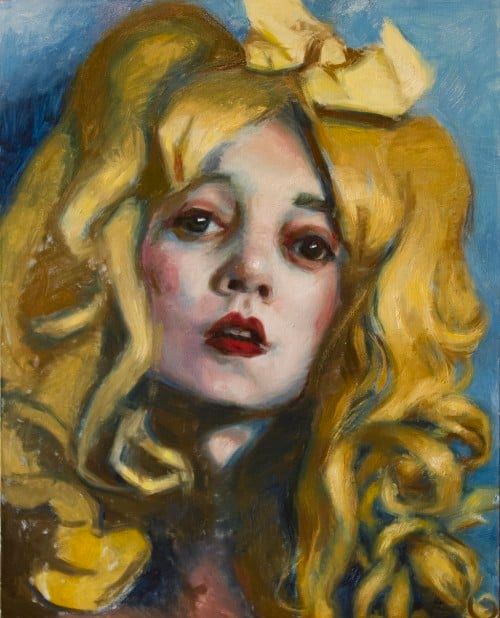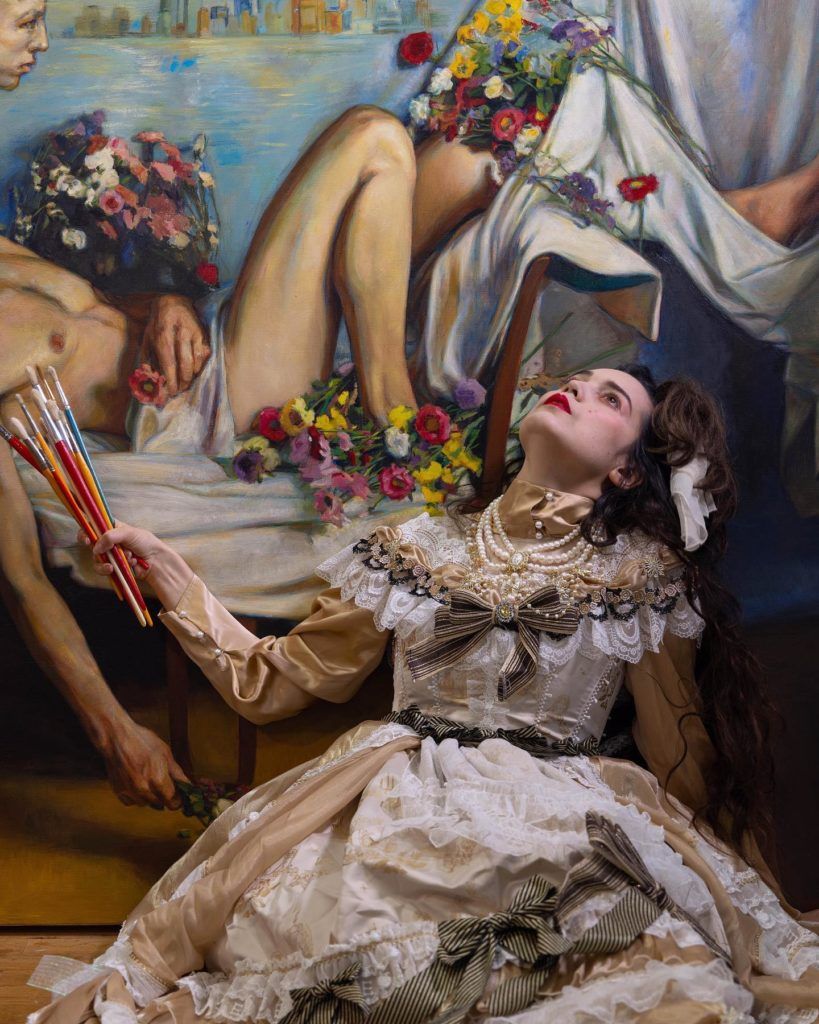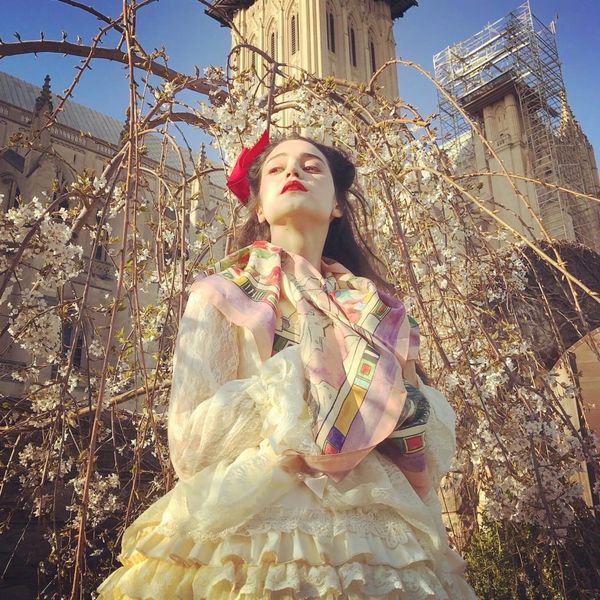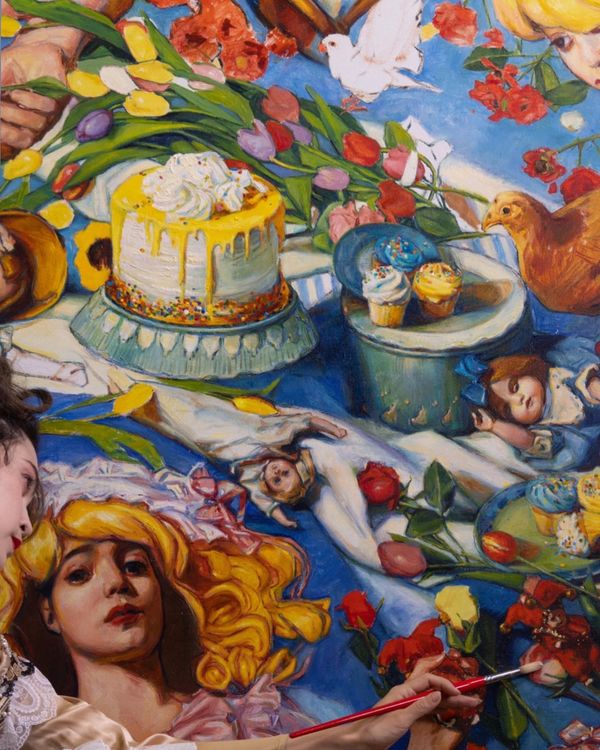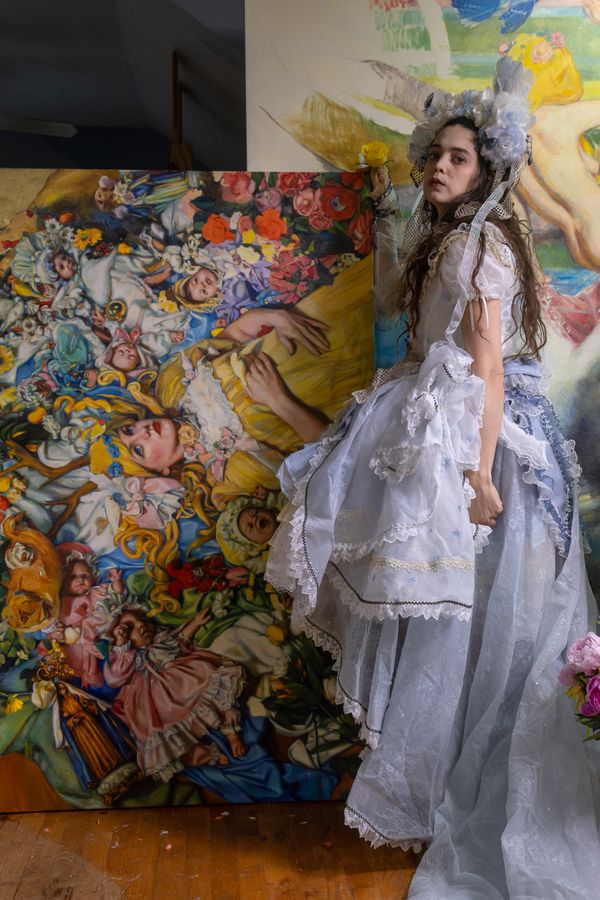Teresa Oaxaca - Artist Spotlight
Tuesday 5 July, 2022
Teresa Oaxaca, an American artist based in Washington DC, has work on display in collections and galleries throughout the US and internationally. Raw Umber Studios asked her to pick out and describe a few of the things – ordinary and extraordinary - that have inspired her: from childhood, on to her award-winning fine art oil and portrait paintings of today.
Teresa is teaching Oil Painting Portraiture on May 14th - 17th, 2025 at Raw Umber Studios.
Growing up, I spent a lot of time with my sister, or just alone, making things out of clay and playing with them. When I was very young – maybe three or four – I made a very realistic sleigh with reindeer one Christmas, out of red clay. I must have done it in the small hours; I remember putting it by my parents’ bedroom so, when they opened the door, there would be this sculpture. I would draw and paint things all the time. I was even allowed to paint on the walls! (In my room not everywhere.) I had a little Crayola suitcase that opened up – I don’t know if they still make them – with all the crayons in there.
We got our first computer when I was seven or eight years old, and I remember having a computer addiction soon after that. My parents had to pretend the cable didn’t work anymore. Then my sister and I realised it was in their bedroom so we’d sneak in! I do know what it’s like, to spend every moment at a computer game: you don’t want to be doing it but you’re so addicted. So I thought: I’m not going to play those because, even if I limited it to three hours a day, that’s a lot of painting-time over a lifetime or even over a year. But I like to think that whatever makes me susceptible to that makes me a good artist. I can channel it into paintings.
One can draw so much from many different periods in history. When I was six, we lived in The Hague for about four years, so I was immersed in an older culture; I have a nostalgia for – and childhood memories of - those older buildings. When I was studying art, I was really drawn to Michelangelo and da Vinci, Rembrandt and Caravaggio. I was aware that these paintings seemed to inhabit Cathedral-esque buildings, so I’d be gravitating towards structures that looked like that. It’s where I started to get that connection to the past, because the kind of art I liked seemed to be in the past. Now I realise a lot of artists practise this type of representational art today; they’re just not given main-stage. It may not be the current fashion, but everything gets recycled over time, in a remix kind of way.
When I was quite young, I decided that – if I was going to spend money on anything – it would be preferable to spend it in a way I wasn’t going to regret: I didn’t want shabby things. A lot of the things I have are used or old, so it’s not like everything has to be brand new; but I didn’t want anything I would look at that wouldn’t bring me joy. Or would annoy me. We’ve got a lot of holidays here in America, like Hallowe’en; the cheapness of the plastic decorations versus a better-made quality would drive me nuts. Even my initial interests were in well-drawn story books rather than poorly drawn ones.
I have about a dozen antique porcelain dolls. French ones are incredibly rare and difficult to get your hands on, so I have French reproductions, made in the 1950s from original moulds, and a bunch of 1890s/1900s German dolls that are close to the original French in quality and look. The faces would have been sculpted by the kinds of artists that I like: more Old World than 20th century.
Mostly, I wanted the dolls as characters in my paintings. I was always drawn to how older paintings have putti – small cherubs: often a funny pair, gambolling in the corner; not related to the painting but bringing comic relief to an otherwise serious scene. Ancient Greeks put them everywhere. Even in the early 20th century, in New York City, architects were putting them on skyscrapers. Then, all of a sudden, it was: ‘OK! Take all the faces, all the sculpture, and anything human off buildings and make them sheer and plain!’ I think Art Deco probably had the last of them – mostly Gothic, cement, very abstract figures - which were kind of neat.
And that was it. Probably put a lot of craftspeople out of business and made the city a lot less interesting.
I wanted to bring back the tradition. I ended up sculpting my own out of clay, and using doll parts, and putting dresses on them; they looked quite real.
Then I realised I could afford antique dolls and I started collecting those. I had seen dolls used in a movie, Alice, by the Czech artist Jan Švankmaje. There was one girl in the whole film - everyone else was a taxidermy animal or a 19th century doll. Really cool.
When I was studying in Florence [at the Florence Academy of Art and the Angel Academy], I arrived with blue jeans and some tee shirts, maybe a skirt. Even then, no one wore skirts; you didn’t dress ‘feminine’. But I was starting a new life in Italy so I bought the most feminine skirt I could get: a really long weight, very voluminous but pleated skirt, which was always getting caught in my bicycle spokes.
One day, I went to this outdoor fruit market where they had clothing stalls with items for a Euro. I got this bunch of frilly white shirts – kind of Tyrolean – and a black jacket, and I started putting outfits together. But it would be rare to find something that would exactly fit, so I supplemented it by going onto the internet where there was a lot of ‘alternative’ fashion. Independent seamstresses inspired by things like cartoons and historical scenes.
Rococo is probably my favourite period: it’s a few specific years (though historical dramas have made it seem like a hundred). I love the 1780s, right before the Revolution and heads rolling: the apex of decadence. Of course, wearing those costumes is entirely impractical, so a bunch of people have made knee-length versions and iterations. I wear a lot of Victorian-era shoes, jackets and dresses. Because they’re later in history, they’re more acceptable. You’re not going to get as many heads turning as if you went out as a 12th century person.
Even before I was painting people and outfits and costumes, I was dressing that way; so I had figure out a way to fit better into that world. At first, when I would dress up and go out with friends, someone would say, ‘Are you in a film?’ And I used to just say, no; but I’d get this look of, ‘How dare you pull my leg!’ One time I was in a film – a Norwegian artist had travelled to the States to make a film about artists and asked if I would be part of it. That day, when someone asked about my outfit, I said, yes, I was in a film, and got a very approving nod. That was the end of the conversation and it was great. So, next thing, I planned an art-form. I gave 12 people an artist-tour of a museum and talked about techniques while wearing a jade-green Victorian bustle gown with a train. It’s not something I would ever wear outside the house because it’s impractical but I was like, I’m doing an art-tour, dressed like a Sargent portrait–model. This is fun; I make money; people support what I do; and the look speaks for itself. Instead of going against the grain, I did a Jiu-jitsu thing and used energy to deflect the attack without any kind of aggression.
Now I’m getting into film-making myself. I’m so excited that I’ve found a way to take advantage of dressing up. It’s like, well, I’m also making a video now, so the clothes don’t hinder; they help. It’s a way to take the energy or attention you might not want and turn it towards your career. To make it work with my life.

One of my plans is to start a travel videologue, which I’m very excited about now that I can travel again. Before the pandemic, I would go to museums a lot – every week – and I’d travel four or five months of the year, teaching. There were good things about not being able to do that. It meant I had more time to spend in my own studio, in my own head. It was also good not having to keep up to date with whatever was going on. A lot of people want to make art within a certain field, in a certain way. Everybody would be painting the same thing within the same community, even if they were in different cities or continents. Just breaking that connection a little bit can be creatively a great thing. It’s like the artist Stanley Spencer, who did these weird paintings where he’d set Bible stories – like the Resurrection – in his own town. No one else was doing that. He was his own self. He wasn’t plugged in to what all other realists were supposed to be painting. I like artists like that. The pandemic gave me a push; a new way of being, kind of like going to Florence at the age of 17 and starting a new life in another country. I could change how I was and what I wanted to do in life.
- For more information, visit teresaoaxaca.com


